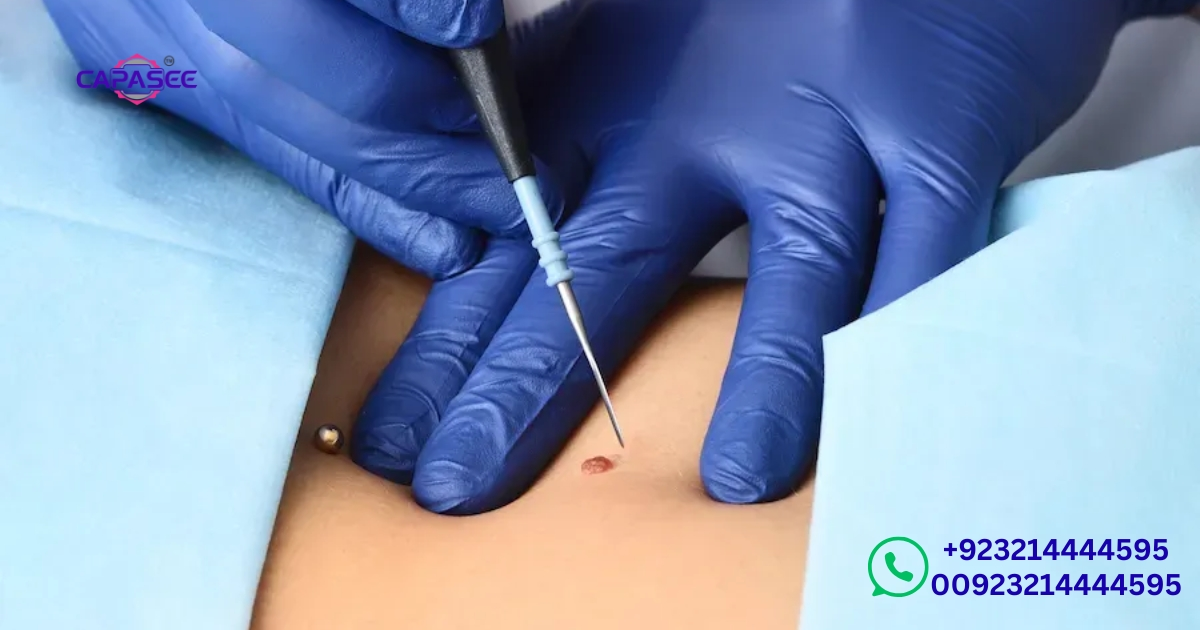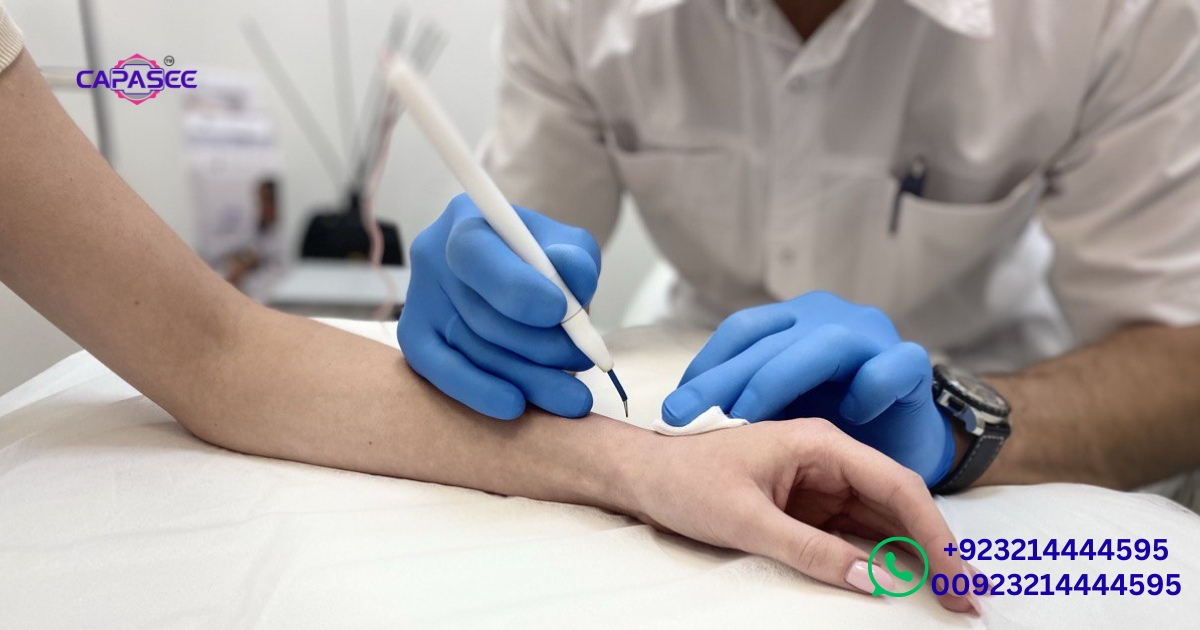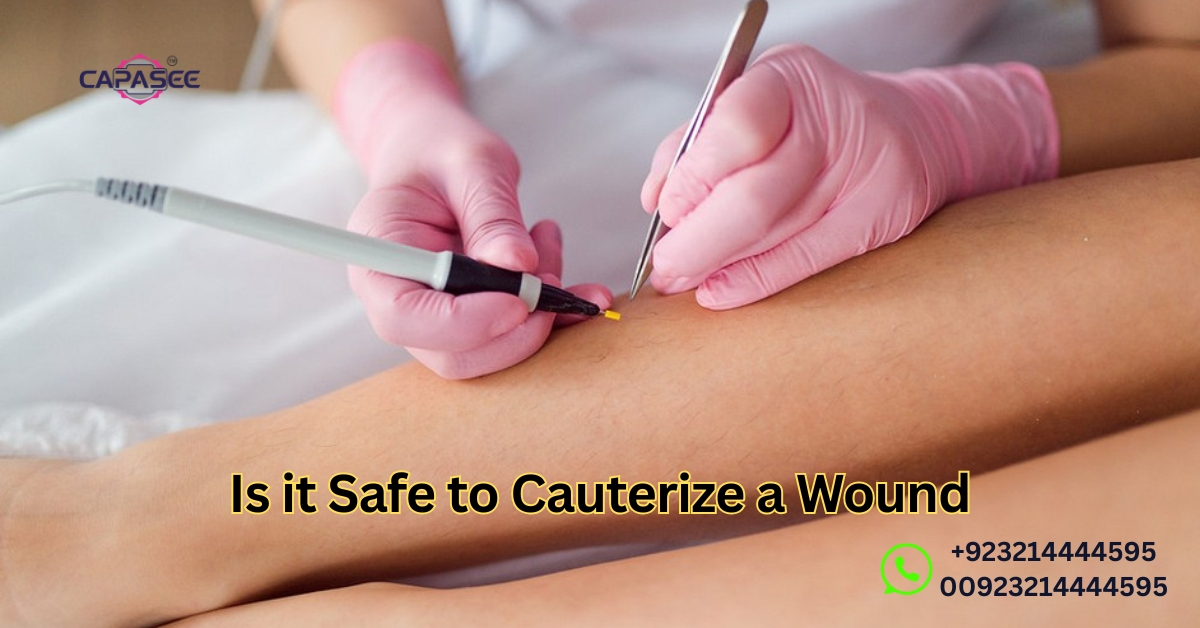You may have heard “cauterize” in a film or from a close friend. Now you wonder if this is safe. It’s both exciting and scary to think about using chemicals or heat to cauterize a wound. When you consider the risks and benefits, it’s natural to be apprehensive.
This blog post explains what it means to cauterize a wound, how it is performed, and when it might be the best option. Learn about the procedure and what to expect. You will also learn how to care for a wound that has been cauterized. You’ll know by the end if this method is right for you.
Is it Safe to Cauterize a Wound? Truths You Must Know Before Considering It
Cauterizing is a practice that has been used for centuries to stop bleeding from wounds and heal them. The tissue is burned to seal the blood vessels and stop excessive bleeding. This process may seem effective, but it is not always safe.
It is important to mention that medical specialists are the only personnel who can cauterize a wound. Lack of proper cauterization can result in some severe complications, including scar, infection, or burned tissue. Knowledge of these risks can enable you to know when cauterization is required.
You May Also Read This Blog: What is a Cautery Machine Used For
How Does Cauterization Work on Wounds and Why Is It Used
The process of cauterization involves applying heat or chemicals to tissue to seal blood vessels, thereby stopping bleeding. Since ancient times, this technique has been used to cauterize a wound in an emergency situation.
Depending on the situation, electrocautery or chemical cauterization can be used to treat wounds. Modern medicine uses it to control bleeding, treat infected tissues, and remove abnormal growths.
Wound Cauterization Risks vs. Benefits You Need to Understand
The wound cauterization process can stop bleeding and prevent infection, but it is not without risks. The main risks when you cauterize a wound include tissue burning, scarring after cauterization and possible damage to healthy tissue around the wound.
In an emergency, cauterization can stop bleeding and save lives. It is important to weigh the risks and benefits of the procedure, particularly when it is performed in non emergency situations.
Cauterization Pain, Anesthesia, and What Recovery Really Feels Like
Pain management during cauterization is important. Local anesthesia is usually used to minimize discomfort. The area is numbed, which allows the procedure to be performed with less pain. There may be some swelling and discomfort after the treatment. The healing time can also vary depending on how severe the wound is.
For a faster healing time, it is important to follow the instructions for wound care after you cauterize a wound. To promote faster wound healing, it’s important to closely follow medical advice.
Cauterization Table: Treatment Comparison
| Cauterization Type | Advantages | Risks |
| Electrical Cautery | Quick, effective, seals blood vessels | Burns, infection, scarring |
| Chemical Cauterization | Less heat, gentler on tissue | Skin irritation, chemical burns |
| Cauterizing Blood Vessels | Reduces bleeding, aids in surgery | Tissue damage, scarring |
Medical Cauterization Procedure Explained by Capasee Electro Medical Engineering

A medical procedure called cauterization of a cut uses heat or chemicals in order to stop the bleeding and seal the blood vessels. This method is used to treat wounds, and it prevents further damage. This method is commonly used during emergencies and surgeries.
A medical professional cauterizes the wound by carefully applying heat or chemicals. This cauterization measure is designed to prevent blood loss and infection. To ensure healing, it’s important to adhere to the cauterization instructions.
Cauterization for Bleeding Control: When Is It Truly Necessary?
In situations where bleeding is uncontrollable by any other means, it may be necessary to cauterize a wound. It seals blood vessels to reduce bleeding. It’s the only option for severe injuries.
The wound is cauterized by a medical professional who pays special attention to the use of heat or chemicals. This is a precautionary measure of cauterization that prevents blood loss and infection. To have a good result of healing, it is significant to follow the instructions of cauterization.
Chemical vs. Electrocautery for Wound Healing – Which Is Safer?
Electrocautery uses electricity to cauterize a wound, while chemical cauterization uses caustic substances. The two methods are both effective, but their risks for scarring and burns can differ depending on which technique is used.
Electrical cautery and chemical cautery are both effective methods of treating wounds. However, the ease and precision with which they can be used vary. Electrical cauterization may cause tissue burns, whereas chemical cauterization is less invasive.
Professional Cauterization Equipment and Safety Tips from Experts
A safe cauterization requires the use of the correct cauterization equipment. Cauterization is the practice of medical professionals who use controlled heat, such as cautery pens and chemical solutions. It is very accurate and ensures less risk of getting injured.
The wound is treated by both electrical and chemical cautery. Their convenience and accuracy of use, however, vary. Electrical cauterizing may also be used to burn the tissue and chemical cauterization is less invasive.
Life After Cauterization – Healing, Side Effects, and Safer Alternatives

After cauterizing a wound, you must take care to prevent infection and stop bleeding. Scarring is common after the procedure and healing may take time.
Follow the doctor’s instructions on how long cauterization takes to heal. Although cauterization is important, other options like sutures can sometimes provide a more gentle healing process with less risk of scarring.
Wound Healing After Cauterization, Infection Risks, and Scarring Concerns
After cauterizing, the wound will heal by managing pain and preventing infections. Local anesthesia is often used to manage pain after cauterization. There is always the risk of tissue burn or scarring after cauterization if wounds are not properly cared for.
If wound care and dressing are not done properly after you cauterize a wound, infections can develop. It is quick to cauterize the wound and stop the bleeding, but if you leave it untreated, your wound may not heal properly, increasing your risk.
Read More: Our Products
Is Cauterization Better Than Sutures? Pros and Cons Compared
Both cauterizing and suturing a wound have their benefits. In an emergency, you may need to cauterize a wound to stop the bleeding. However, it is associated with the possibility of scarring. Sutures are less likely than cauterization to leave scars and provide better cosmetic results.
Sutures can also be used to close wounds more precisely, which reduces the risk of infection. Sutures are a better alternative to cautery for wounds that heal more slowly.
Alternatives to Wound Cauterization and How to Care for a Cauterized Wound
In other instances, other options such as electrocautery wound treatment or chemical cauterization of wounds can be explored. These techniques have their fair share of risks, although they provide the ability to control the burning of tissue accurately. When cauterize a wound, it is important to practice proper cauterization aftercare to prevent complications.
Reviewing aftercare can accelerate the cauterization healing process in case you have had electrical cautery vs chemical cautery, such as proper wound dressing. Home cauterization should always be avoided because it is quite dangerous without the assistance of experts.
Frequently Asked Questions
Is cauterizing a wound safe?
When done by a professional, cauterizing a wound can be safe. However, improper use could lead to infections or burns.
What are the side effects of cauterization?
If not treated properly, side effects may include swelling, pain, scarring and infection.
Is it haram to cauterize wounds?
Cautioning wounds may not be haram inherently, but this can depend on the individual’s beliefs and circumstances. Consult a religious adviser.
What happens after a wound is cauterized?
The wound will heal as the tissues seal, but you may need to take extra care in order to avoid complications such as infection.
What type of wounds can be cauterized?
In emergencies or during surgery, Cauterization may be used to treat severe wounds or burns that are bleeding profusely.
Final Thoughts
The issue of whether it is safe to cauterize a wound or not depends on the circumstances and experience of the expert carrying out the procedure. Cauterization can also be used to prevent bleeding and infection when performed properly. Nonetheless, when used inappropriately, it may cause such complications as scarring, burns, or infections. Cauterization should be properly taken care of by making sure that one avoids trying it at home. The treatment of any wound with cauterization should always be checked with a healthcare provider to determine whether or not the treatment is suitable in your particular case. The effective result is based on safety and professional guidance.

